Stacy A. Hagen, Stacy A. Hagen, Betty S. Azar, Betty S Azar
Fundamentals of English Grammar Student Book with Mylab English, 5e
Stacy A. Hagen, Stacy A. Hagen, Betty S. Azar, Betty S Azar
Fundamentals of English Grammar Student Book with Mylab English, 5e
- Broschiertes Buch
- Merkliste
- Auf die Merkliste
- Bewerten Bewerten
- Teilen
- Produkt teilen
- Produkterinnerung
- Produkterinnerung
The world’s most trusted grammar source for clear, direct, and comprehensive instruction, the Azar-Hagen Grammar Series takes a time-tested approach that blends direct grammar instruction with carefully sequenced practice to develop all language skills. Grammar is the springboard for developing all language skills: speaking, listening, reading, and writing. With clear, user-friendly charts and engaging interactive practice, it’s easy to see why this classic series remains the top-selling text in its field year after year. Using a time-tested approach that has helped millions of students around…mehr
Andere Kunden interessierten sich auch für
![Azar-Hagen Grammar - (Ae) - 5th Edition - Workbook B - Fundamentals of English Grammar (W Answer Key) Azar-Hagen Grammar - (Ae) - 5th Edition - Workbook B - Fundamentals of English Grammar (W Answer Key)]() Betty S AzarAzar-Hagen Grammar - (Ae) - 5th Edition - Workbook B - Fundamentals of English Grammar (W Answer Key)17,99 €
Betty S AzarAzar-Hagen Grammar - (Ae) - 5th Edition - Workbook B - Fundamentals of English Grammar (W Answer Key)17,99 €![Fundamentals of English Grammar 4e Student Book with Essential Online Resources, International Edition Fundamentals of English Grammar 4e Student Book with Essential Online Resources, International Edition]() Betty S. AzarFundamentals of English Grammar 4e Student Book with Essential Online Resources, International Edition52,99 €
Betty S. AzarFundamentals of English Grammar 4e Student Book with Essential Online Resources, International Edition52,99 €![Azar-Hagen Grammar - (AE) - 5th Edition - Student Book B with App - Fundamentals of English Grammar Azar-Hagen Grammar - (AE) - 5th Edition - Student Book B with App - Fundamentals of English Grammar]() Betty AzarAzar-Hagen Grammar - (AE) - 5th Edition - Student Book B with App - Fundamentals of English Grammar58,99 €
Betty AzarAzar-Hagen Grammar - (AE) - 5th Edition - Student Book B with App - Fundamentals of English Grammar58,99 €![Azar-Hagen Grammar - (AE) - 5th Edition - Student Book A with App - Fundamentals of English Grammar Azar-Hagen Grammar - (AE) - 5th Edition - Student Book A with App - Fundamentals of English Grammar]() Betty AzarAzar-Hagen Grammar - (AE) - 5th Edition - Student Book A with App - Fundamentals of English Grammar58,99 €
Betty AzarAzar-Hagen Grammar - (AE) - 5th Edition - Student Book A with App - Fundamentals of English Grammar58,99 €![Help Your Kids with English, Ages 10-16 (Key Stages 3-4) Help Your Kids with English, Ages 10-16 (Key Stages 3-4)]() Carol VordermanHelp Your Kids with English, Ages 10-16 (Key Stages 3-4)22,99 €
Carol VordermanHelp Your Kids with English, Ages 10-16 (Key Stages 3-4)22,99 €![Dungeons and Dragons Art and Arcana [Special Edition, Boxed Book & Ephemera Set] Dungeons and Dragons Art and Arcana [Special Edition, Boxed Book & Ephemera Set]]() Michael WitwerDungeons and Dragons Art and Arcana [Special Edition, Boxed Book & Ephemera Set]80,99 €
Michael WitwerDungeons and Dragons Art and Arcana [Special Edition, Boxed Book & Ephemera Set]80,99 €![New International Business English, Student's Book New International Business English, Student's Book]() Leo JonesNew International Business English, Student's Book68,99 €
Leo JonesNew International Business English, Student's Book68,99 €-
-
-
The world’s most trusted grammar source for clear, direct, and comprehensive instruction, the Azar-Hagen Grammar Series takes a time-tested approach that blends direct grammar instruction with carefully sequenced practice to develop all language skills. Grammar is the springboard for developing all language skills: speaking, listening, reading, and writing. With clear, user-friendly charts and engaging interactive practice, it’s easy to see why this classic series remains the top-selling text in its field year after year. Using a time-tested approach that has helped millions of students around the world, Fundamentals of English Grammar blends direct grammar instruction with carefully sequenced practice to developspeaking, writing, listening, and reading skills. The fifth edition has been extensively revised to keep pace with advances in theory and practice, particularly from cognitive science. Now more than ever, teachers will find an extensive range of presentations, activities, and tasks to meet the specific needs of their classes.
Hinweis: Dieser Artikel kann nur an eine deutsche Lieferadresse ausgeliefert werden.
Hinweis: Dieser Artikel kann nur an eine deutsche Lieferadresse ausgeliefert werden.
Produktdetails
- Produktdetails
- Verlag: Pearson ELT / Pearson Education
- 5. Aufl.
- Seitenzahl: 480
- Erscheinungstermin: 19. September 2019
- Englisch
- Abmessung: 250mm x 199mm x 16mm
- Gewicht: 740g
- ISBN-13: 9780134998824
- ISBN-10: 0134998820
- Artikelnr.: 49787907
- Herstellerkennzeichnung
- Libri GmbH
- Europaallee 1
- 36244 Bad Hersfeld
- gpsr@libri.de
- Verlag: Pearson ELT / Pearson Education
- 5. Aufl.
- Seitenzahl: 480
- Erscheinungstermin: 19. September 2019
- Englisch
- Abmessung: 250mm x 199mm x 16mm
- Gewicht: 740g
- ISBN-13: 9780134998824
- ISBN-10: 0134998820
- Artikelnr.: 49787907
- Herstellerkennzeichnung
- Libri GmbH
- Europaallee 1
- 36244 Bad Hersfeld
- gpsr@libri.de
Chapter 1 PRESENT TIME
1-1 Simple Present and Present Progressive
1-2 Forms of the Simple Present and the Present Progressive
1-3 Singular/Plural
1-4 Spelling of Simple Present Verbs: Final -s/-es
1-5 Frequency Adverbs
1-6 Verbs Not Usually Used in the Progressive
1-7 Present Verbs: Short Answers to Yes/No Questions
Chapter 2 PAST TIME
2-1 The Simple Past: Regular Verbs
2-2 Expressing Past Time: The Simple Past, Irregular Verbs
2-3 Common Irregular Verbs: A Reference List
2-4 Recognizing Verb Endings and Questions with Did
2-5 Spelling of -ing and -ed Forms
2-6 The Past Progressive
2-7 Simple Past vs. Past Progressive
2-8 Expressing Past Time: Using Time Clauses
2-9 Expressing Past Habit: Used To
Chapter 3 FUTURE TIME
3-1 Expressing Future Time: Be Going To and Will
3-2 Forms with Be Going To
3-3 Forms with Will
3-4 Be Going To and Will in Spoken English
3-5 Be Going To vs. Will
3-6 Certainty About the Future
3-7 Expressing the Future in Time Clauses and If-Clauses
3-8 Using the Present Progressive to Express Future Time
3-9 Using the Simple Present to Express Future Time
3-10 Immediate Future: Using Be About To
3-11 Parallel Verbs
Chapter 4 PRESENT PERFECT AND PAST PERFECT
4-1 Past Participle
4-2 Introduction to the Present Perfect: Unspecified Time with Ever and
Never
4-3 The Present Perfect with Unspecified Time: Already, Yet, Just, Recently
4-4 Present Perfect with Since and For
4-5 Simple Past vs. Present Perfect
4-6 Present Perfect Progressive
4-7 Present Perfect Progressive vs. Present Perfect
4-8 Past Perfect
Chapter 5 ASKING QUESTIONS
5-1 Yes/No Questions and Short Answers
5-2 Where, Why, When, What Time, How Come, What … For
5-3 Questions With Who, Whom, and What
5-4 Using What + a Form of Do
5-5 Which vs. What and What Kind Of
5-6 Using How
5-7 Using How Often / How Many Times
5-8 Talking About Distance
5-9 Length of Time: It + Take and How Long; How Many
5-10 Spoken and Written Contractions with Question Words
5-11 More Questions with How
5-12 Using How About and What About
5-13 Tag Questions
Chapter 6 NOUNS AND PRONOUNS
6-1 Plural Forms of Nouns
6-2 Pronunciation of Final -s/-es
6-3 Subjects, Verbs, and Objects
6-4 Objects of Prepositions
6-5 Prepositions of Time
6-6 Word Order: Place and Time
6-7 Subject-Verb Agreement
6-8 Using Adjectives to Describe Nouns
6-9 Using Nouns as Adjectives
6-10 Personal Pronouns: Subjects and Objects
6-11 Possessive Nouns
6-12 Using Whose
6-13 Possessive Pronouns and Adjectives
6-14 Reflexive Pronouns
6-15 Singular Forms of Other: Another vs. The Other
6-16 Plural Forms of Other: Other(s) vs. The Other(s)
6-17 Summary: Forms of Other
Chapter 7 MODAL AUXILIARIES, THE IMPERATIVE, MAKING SUGGESTIONS,
STATING PREFERENCES
7-1 Introduction to Modal Auxiliaries
7-2 Expressing Ability: Can, Could, Be Able To
7-3 Expressing Possibility: May, Might, and Maybe; Expressing
Permission: May and Can
7-4 Using Could to Express Possibility
7-5 Polite Requests with I: May, Could, Can
7-6 Polite Requests with You: Would, Could, Will, Can
7-7 Expressing Advice: Should and Ought To
7-8 Expressing Advice: Had Better
7-9 Expressing Necessity: Have To, Have Got To, Must
7-10 Expressing Lack Of Necessity: Do Not Have To; Expressing Prohibition:
Must Not
7-11 Making Logical Conclusions: Must
7-12 Tag Questions with Modal Auxiliaries
7-13 Imperative Sentences: Giving Instructions
7-14 Making Suggestions: Let’s and Why Don’t
7-15 Stating Preferences: Prefer, Like … Better, Would Rather
7-16 Summary: Modal Auxiliaries Taught in Chapter 7
Chapter 8 CONNECTING IDEAS: PUNCTUATION AND MEANING
8-1 Connecting Ideas with And
8-2 Connecting Ideas with But and Or
8-3 Connecting Ideas with So
8-4 Using Auxiliary Verbs After But
8-5 Using And + Too, So, Either, Neither
8-6 Connecting Ideas with Because
8-7 Connecting Ideas with Even Though/Although
Chapter 9 COMPARISONS
9-1 Introduction to Comparative Forms of Adjectives
9-2 Introduction to Superlative Forms of Adjectives
9-3 Completing Comparatives and Superlatives
9-4 Making Comparisons with Adverbs
9-5 Repeating a Comparative; Using Double Comparatives 4
9-6 Modifying Comparatives with Adjectives and Adverbs
9-7 Negative Comparisons
9-8 Using As … As to Make Comparisons
9-9 Using Less … Than and Not As … As
9-10 Using More with Nouns
9-11 Using The Same, Similar, Different, Like, Alike
Chapter 10 THE PASSIVE
10-1 Active and Passive Sentences
10-2 Forming the Passive
10-3 Progressive Forms of the Passive
10-4 Transitive and Intransitive Verbs
10-5 Using the by-Phrase
10-6 Passive Modal Auxiliaries
10-7 Past Participles as Adjectives (Stative or Non-Progressive Passive)
10-8 Participial Adjectives: -ed vs. -ing
10-9 Get + Adjective; Get + Past Participle
10-10 Using Be Used/Accustomed To and Get Used/Accustomed To
10-11 Used To vs. Be Used To
10-12 Using Be Supposed To
Chapter 11 COUNT/NONCOUNT NOUNS AND ARTICLES
11-1 A vs. An
11-2 Count and Noncount Nouns
11-3 Noncount Nouns
11-4 More Noncount Nouns
11-5 Using A Lot Of, Some, Several, Many/Much, and A Few/A Little
11-6 Nouns That Can Be Count or Noncount
11-7 Using Units of Measure with Noncount Nouns
11-8 Articles with Count and Noncount Nouns: A/An, The, Ø
11-9 More About Articles
11-10 Using The or Ø with People and Places
11-11 Capitalization
Chapter 12 ADJECTIVE CLAUSES
12-1 Adjective Clauses: Introduction
12-2 Using Who and That in Adjective Clauses to Describe People
12-3 Using Object Pronouns in Adjective Clauses to Describe People
12-4 Using Pronouns in Adjective Clauses to Describe Things
12-5 Singular and Plural Verbs in Adjective Clauses
12-6 Using Prepositions in Adjective Clauses
12-7 Using Whose in Adjective Clauses
Chapter 13 GERUNDS AND INFINITIVES
13-1 Verb + Gerund
13-2 Go + -ing
13-3 Verb + Infinitive
13-4 Verb + Gerund or Infinitive
13-5 Preposition + Gerund
13-6 Using By and With to Express How Something Is Done
13-7 Using Gerunds as Subjects; Using It + Infinitive
13-8 It + Infinitive: Using For (Someone)
13-9 Expressing Purpose with In Order To and For
13-10 Using Infinitives with Too and Enough
Chapter 14 NOUN CLAUSES
14-1 Noun Clauses: Introduction
14-2 Noun Clauses That Begin with a Question Word
14-3 Noun Clauses That Begin with If or Whether
14-4 Noun Clauses That Begin with That
14-5 Other Uses of That-Clauses
14-6 Substituting So for a That-Clause in Conversational Responses
14-7 Quoted Speech
14-8 Quoted Speech vs. Reported Speech
14-9 Verb Forms in Reported Speech
14-10 Common Reporting Verbs: Tell, Ask, Answer/Reply
Appendix SUPPLEMENTARY GRAMMAR CHARTS
Unit A: A-1 The Principal Parts of a Verb
A-2 Common Irregular Verbs: A Reference List
A-3 The Present Perfect vs. The Past Perfect
A-4 The Past Progressive vs. The Past Perfect
A-5 Regular Verbs: Pronunciation of -ed Endings
A-6 Pronunciation of Final -s/-es for Verbs and Nouns
A-7 Review: Subject and Object Pronouns, Possessive Pronouns and
Possessive Adjectives
A-8 Comparison of Yes/No and Information Question Forms
Unit B: B-1 Phrasal Verbs
B-2 Phrasal Verbs: A Reference List
Unit C: C-1 Preposition Combinations: Introduction
C-2 Preposition Combinations: A Reference List
Listening Script
Trivia Answers
Index
Credits
1-1 Simple Present and Present Progressive
1-2 Forms of the Simple Present and the Present Progressive
1-3 Singular/Plural
1-4 Spelling of Simple Present Verbs: Final -s/-es
1-5 Frequency Adverbs
1-6 Verbs Not Usually Used in the Progressive
1-7 Present Verbs: Short Answers to Yes/No Questions
Chapter 2 PAST TIME
2-1 The Simple Past: Regular Verbs
2-2 Expressing Past Time: The Simple Past, Irregular Verbs
2-3 Common Irregular Verbs: A Reference List
2-4 Recognizing Verb Endings and Questions with Did
2-5 Spelling of -ing and -ed Forms
2-6 The Past Progressive
2-7 Simple Past vs. Past Progressive
2-8 Expressing Past Time: Using Time Clauses
2-9 Expressing Past Habit: Used To
Chapter 3 FUTURE TIME
3-1 Expressing Future Time: Be Going To and Will
3-2 Forms with Be Going To
3-3 Forms with Will
3-4 Be Going To and Will in Spoken English
3-5 Be Going To vs. Will
3-6 Certainty About the Future
3-7 Expressing the Future in Time Clauses and If-Clauses
3-8 Using the Present Progressive to Express Future Time
3-9 Using the Simple Present to Express Future Time
3-10 Immediate Future: Using Be About To
3-11 Parallel Verbs
Chapter 4 PRESENT PERFECT AND PAST PERFECT
4-1 Past Participle
4-2 Introduction to the Present Perfect: Unspecified Time with Ever and
Never
4-3 The Present Perfect with Unspecified Time: Already, Yet, Just, Recently
4-4 Present Perfect with Since and For
4-5 Simple Past vs. Present Perfect
4-6 Present Perfect Progressive
4-7 Present Perfect Progressive vs. Present Perfect
4-8 Past Perfect
Chapter 5 ASKING QUESTIONS
5-1 Yes/No Questions and Short Answers
5-2 Where, Why, When, What Time, How Come, What … For
5-3 Questions With Who, Whom, and What
5-4 Using What + a Form of Do
5-5 Which vs. What and What Kind Of
5-6 Using How
5-7 Using How Often / How Many Times
5-8 Talking About Distance
5-9 Length of Time: It + Take and How Long; How Many
5-10 Spoken and Written Contractions with Question Words
5-11 More Questions with How
5-12 Using How About and What About
5-13 Tag Questions
Chapter 6 NOUNS AND PRONOUNS
6-1 Plural Forms of Nouns
6-2 Pronunciation of Final -s/-es
6-3 Subjects, Verbs, and Objects
6-4 Objects of Prepositions
6-5 Prepositions of Time
6-6 Word Order: Place and Time
6-7 Subject-Verb Agreement
6-8 Using Adjectives to Describe Nouns
6-9 Using Nouns as Adjectives
6-10 Personal Pronouns: Subjects and Objects
6-11 Possessive Nouns
6-12 Using Whose
6-13 Possessive Pronouns and Adjectives
6-14 Reflexive Pronouns
6-15 Singular Forms of Other: Another vs. The Other
6-16 Plural Forms of Other: Other(s) vs. The Other(s)
6-17 Summary: Forms of Other
Chapter 7 MODAL AUXILIARIES, THE IMPERATIVE, MAKING SUGGESTIONS,
STATING PREFERENCES
7-1 Introduction to Modal Auxiliaries
7-2 Expressing Ability: Can, Could, Be Able To
7-3 Expressing Possibility: May, Might, and Maybe; Expressing
Permission: May and Can
7-4 Using Could to Express Possibility
7-5 Polite Requests with I: May, Could, Can
7-6 Polite Requests with You: Would, Could, Will, Can
7-7 Expressing Advice: Should and Ought To
7-8 Expressing Advice: Had Better
7-9 Expressing Necessity: Have To, Have Got To, Must
7-10 Expressing Lack Of Necessity: Do Not Have To; Expressing Prohibition:
Must Not
7-11 Making Logical Conclusions: Must
7-12 Tag Questions with Modal Auxiliaries
7-13 Imperative Sentences: Giving Instructions
7-14 Making Suggestions: Let’s and Why Don’t
7-15 Stating Preferences: Prefer, Like … Better, Would Rather
7-16 Summary: Modal Auxiliaries Taught in Chapter 7
Chapter 8 CONNECTING IDEAS: PUNCTUATION AND MEANING
8-1 Connecting Ideas with And
8-2 Connecting Ideas with But and Or
8-3 Connecting Ideas with So
8-4 Using Auxiliary Verbs After But
8-5 Using And + Too, So, Either, Neither
8-6 Connecting Ideas with Because
8-7 Connecting Ideas with Even Though/Although
Chapter 9 COMPARISONS
9-1 Introduction to Comparative Forms of Adjectives
9-2 Introduction to Superlative Forms of Adjectives
9-3 Completing Comparatives and Superlatives
9-4 Making Comparisons with Adverbs
9-5 Repeating a Comparative; Using Double Comparatives 4
9-6 Modifying Comparatives with Adjectives and Adverbs
9-7 Negative Comparisons
9-8 Using As … As to Make Comparisons
9-9 Using Less … Than and Not As … As
9-10 Using More with Nouns
9-11 Using The Same, Similar, Different, Like, Alike
Chapter 10 THE PASSIVE
10-1 Active and Passive Sentences
10-2 Forming the Passive
10-3 Progressive Forms of the Passive
10-4 Transitive and Intransitive Verbs
10-5 Using the by-Phrase
10-6 Passive Modal Auxiliaries
10-7 Past Participles as Adjectives (Stative or Non-Progressive Passive)
10-8 Participial Adjectives: -ed vs. -ing
10-9 Get + Adjective; Get + Past Participle
10-10 Using Be Used/Accustomed To and Get Used/Accustomed To
10-11 Used To vs. Be Used To
10-12 Using Be Supposed To
Chapter 11 COUNT/NONCOUNT NOUNS AND ARTICLES
11-1 A vs. An
11-2 Count and Noncount Nouns
11-3 Noncount Nouns
11-4 More Noncount Nouns
11-5 Using A Lot Of, Some, Several, Many/Much, and A Few/A Little
11-6 Nouns That Can Be Count or Noncount
11-7 Using Units of Measure with Noncount Nouns
11-8 Articles with Count and Noncount Nouns: A/An, The, Ø
11-9 More About Articles
11-10 Using The or Ø with People and Places
11-11 Capitalization
Chapter 12 ADJECTIVE CLAUSES
12-1 Adjective Clauses: Introduction
12-2 Using Who and That in Adjective Clauses to Describe People
12-3 Using Object Pronouns in Adjective Clauses to Describe People
12-4 Using Pronouns in Adjective Clauses to Describe Things
12-5 Singular and Plural Verbs in Adjective Clauses
12-6 Using Prepositions in Adjective Clauses
12-7 Using Whose in Adjective Clauses
Chapter 13 GERUNDS AND INFINITIVES
13-1 Verb + Gerund
13-2 Go + -ing
13-3 Verb + Infinitive
13-4 Verb + Gerund or Infinitive
13-5 Preposition + Gerund
13-6 Using By and With to Express How Something Is Done
13-7 Using Gerunds as Subjects; Using It + Infinitive
13-8 It + Infinitive: Using For (Someone)
13-9 Expressing Purpose with In Order To and For
13-10 Using Infinitives with Too and Enough
Chapter 14 NOUN CLAUSES
14-1 Noun Clauses: Introduction
14-2 Noun Clauses That Begin with a Question Word
14-3 Noun Clauses That Begin with If or Whether
14-4 Noun Clauses That Begin with That
14-5 Other Uses of That-Clauses
14-6 Substituting So for a That-Clause in Conversational Responses
14-7 Quoted Speech
14-8 Quoted Speech vs. Reported Speech
14-9 Verb Forms in Reported Speech
14-10 Common Reporting Verbs: Tell, Ask, Answer/Reply
Appendix SUPPLEMENTARY GRAMMAR CHARTS
Unit A: A-1 The Principal Parts of a Verb
A-2 Common Irregular Verbs: A Reference List
A-3 The Present Perfect vs. The Past Perfect
A-4 The Past Progressive vs. The Past Perfect
A-5 Regular Verbs: Pronunciation of -ed Endings
A-6 Pronunciation of Final -s/-es for Verbs and Nouns
A-7 Review: Subject and Object Pronouns, Possessive Pronouns and
Possessive Adjectives
A-8 Comparison of Yes/No and Information Question Forms
Unit B: B-1 Phrasal Verbs
B-2 Phrasal Verbs: A Reference List
Unit C: C-1 Preposition Combinations: Introduction
C-2 Preposition Combinations: A Reference List
Listening Script
Trivia Answers
Index
Credits
Chapter 1 PRESENT TIME
1-1 Simple Present and Present Progressive
1-2 Forms of the Simple Present and the Present Progressive
1-3 Singular/Plural
1-4 Spelling of Simple Present Verbs: Final -s/-es
1-5 Frequency Adverbs
1-6 Verbs Not Usually Used in the Progressive
1-7 Present Verbs: Short Answers to Yes/No Questions
Chapter 2 PAST TIME
2-1 The Simple Past: Regular Verbs
2-2 Expressing Past Time: The Simple Past, Irregular Verbs
2-3 Common Irregular Verbs: A Reference List
2-4 Recognizing Verb Endings and Questions with Did
2-5 Spelling of -ing and -ed Forms
2-6 The Past Progressive
2-7 Simple Past vs. Past Progressive
2-8 Expressing Past Time: Using Time Clauses
2-9 Expressing Past Habit: Used To
Chapter 3 FUTURE TIME
3-1 Expressing Future Time: Be Going To and Will
3-2 Forms with Be Going To
3-3 Forms with Will
3-4 Be Going To and Will in Spoken English
3-5 Be Going To vs. Will
3-6 Certainty About the Future
3-7 Expressing the Future in Time Clauses and If-Clauses
3-8 Using the Present Progressive to Express Future Time
3-9 Using the Simple Present to Express Future Time
3-10 Immediate Future: Using Be About To
3-11 Parallel Verbs
Chapter 4 PRESENT PERFECT AND PAST PERFECT
4-1 Past Participle
4-2 Introduction to the Present Perfect: Unspecified Time with Ever and
Never
4-3 The Present Perfect with Unspecified Time: Already, Yet, Just, Recently
4-4 Present Perfect with Since and For
4-5 Simple Past vs. Present Perfect
4-6 Present Perfect Progressive
4-7 Present Perfect Progressive vs. Present Perfect
4-8 Past Perfect
Chapter 5 ASKING QUESTIONS
5-1 Yes/No Questions and Short Answers
5-2 Where, Why, When, What Time, How Come, What … For
5-3 Questions With Who, Whom, and What
5-4 Using What + a Form of Do
5-5 Which vs. What and What Kind Of
5-6 Using How
5-7 Using How Often / How Many Times
5-8 Talking About Distance
5-9 Length of Time: It + Take and How Long; How Many
5-10 Spoken and Written Contractions with Question Words
5-11 More Questions with How
5-12 Using How About and What About
5-13 Tag Questions
Chapter 6 NOUNS AND PRONOUNS
6-1 Plural Forms of Nouns
6-2 Pronunciation of Final -s/-es
6-3 Subjects, Verbs, and Objects
6-4 Objects of Prepositions
6-5 Prepositions of Time
6-6 Word Order: Place and Time
6-7 Subject-Verb Agreement
6-8 Using Adjectives to Describe Nouns
6-9 Using Nouns as Adjectives
6-10 Personal Pronouns: Subjects and Objects
6-11 Possessive Nouns
6-12 Using Whose
6-13 Possessive Pronouns and Adjectives
6-14 Reflexive Pronouns
6-15 Singular Forms of Other: Another vs. The Other
6-16 Plural Forms of Other: Other(s) vs. The Other(s)
6-17 Summary: Forms of Other
Chapter 7 MODAL AUXILIARIES, THE IMPERATIVE, MAKING SUGGESTIONS,
STATING PREFERENCES
7-1 Introduction to Modal Auxiliaries
7-2 Expressing Ability: Can, Could, Be Able To
7-3 Expressing Possibility: May, Might, and Maybe; Expressing
Permission: May and Can
7-4 Using Could to Express Possibility
7-5 Polite Requests with I: May, Could, Can
7-6 Polite Requests with You: Would, Could, Will, Can
7-7 Expressing Advice: Should and Ought To
7-8 Expressing Advice: Had Better
7-9 Expressing Necessity: Have To, Have Got To, Must
7-10 Expressing Lack Of Necessity: Do Not Have To; Expressing Prohibition:
Must Not
7-11 Making Logical Conclusions: Must
7-12 Tag Questions with Modal Auxiliaries
7-13 Imperative Sentences: Giving Instructions
7-14 Making Suggestions: Let’s and Why Don’t
7-15 Stating Preferences: Prefer, Like … Better, Would Rather
7-16 Summary: Modal Auxiliaries Taught in Chapter 7
Chapter 8 CONNECTING IDEAS: PUNCTUATION AND MEANING
8-1 Connecting Ideas with And
8-2 Connecting Ideas with But and Or
8-3 Connecting Ideas with So
8-4 Using Auxiliary Verbs After But
8-5 Using And + Too, So, Either, Neither
8-6 Connecting Ideas with Because
8-7 Connecting Ideas with Even Though/Although
Chapter 9 COMPARISONS
9-1 Introduction to Comparative Forms of Adjectives
9-2 Introduction to Superlative Forms of Adjectives
9-3 Completing Comparatives and Superlatives
9-4 Making Comparisons with Adverbs
9-5 Repeating a Comparative; Using Double Comparatives 4
9-6 Modifying Comparatives with Adjectives and Adverbs
9-7 Negative Comparisons
9-8 Using As … As to Make Comparisons
9-9 Using Less … Than and Not As … As
9-10 Using More with Nouns
9-11 Using The Same, Similar, Different, Like, Alike
Chapter 10 THE PASSIVE
10-1 Active and Passive Sentences
10-2 Forming the Passive
10-3 Progressive Forms of the Passive
10-4 Transitive and Intransitive Verbs
10-5 Using the by-Phrase
10-6 Passive Modal Auxiliaries
10-7 Past Participles as Adjectives (Stative or Non-Progressive Passive)
10-8 Participial Adjectives: -ed vs. -ing
10-9 Get + Adjective; Get + Past Participle
10-10 Using Be Used/Accustomed To and Get Used/Accustomed To
10-11 Used To vs. Be Used To
10-12 Using Be Supposed To
Chapter 11 COUNT/NONCOUNT NOUNS AND ARTICLES
11-1 A vs. An
11-2 Count and Noncount Nouns
11-3 Noncount Nouns
11-4 More Noncount Nouns
11-5 Using A Lot Of, Some, Several, Many/Much, and A Few/A Little
11-6 Nouns That Can Be Count or Noncount
11-7 Using Units of Measure with Noncount Nouns
11-8 Articles with Count and Noncount Nouns: A/An, The, Ø
11-9 More About Articles
11-10 Using The or Ø with People and Places
11-11 Capitalization
Chapter 12 ADJECTIVE CLAUSES
12-1 Adjective Clauses: Introduction
12-2 Using Who and That in Adjective Clauses to Describe People
12-3 Using Object Pronouns in Adjective Clauses to Describe People
12-4 Using Pronouns in Adjective Clauses to Describe Things
12-5 Singular and Plural Verbs in Adjective Clauses
12-6 Using Prepositions in Adjective Clauses
12-7 Using Whose in Adjective Clauses
Chapter 13 GERUNDS AND INFINITIVES
13-1 Verb + Gerund
13-2 Go + -ing
13-3 Verb + Infinitive
13-4 Verb + Gerund or Infinitive
13-5 Preposition + Gerund
13-6 Using By and With to Express How Something Is Done
13-7 Using Gerunds as Subjects; Using It + Infinitive
13-8 It + Infinitive: Using For (Someone)
13-9 Expressing Purpose with In Order To and For
13-10 Using Infinitives with Too and Enough
Chapter 14 NOUN CLAUSES
14-1 Noun Clauses: Introduction
14-2 Noun Clauses That Begin with a Question Word
14-3 Noun Clauses That Begin with If or Whether
14-4 Noun Clauses That Begin with That
14-5 Other Uses of That-Clauses
14-6 Substituting So for a That-Clause in Conversational Responses
14-7 Quoted Speech
14-8 Quoted Speech vs. Reported Speech
14-9 Verb Forms in Reported Speech
14-10 Common Reporting Verbs: Tell, Ask, Answer/Reply
Appendix SUPPLEMENTARY GRAMMAR CHARTS
Unit A: A-1 The Principal Parts of a Verb
A-2 Common Irregular Verbs: A Reference List
A-3 The Present Perfect vs. The Past Perfect
A-4 The Past Progressive vs. The Past Perfect
A-5 Regular Verbs: Pronunciation of -ed Endings
A-6 Pronunciation of Final -s/-es for Verbs and Nouns
A-7 Review: Subject and Object Pronouns, Possessive Pronouns and
Possessive Adjectives
A-8 Comparison of Yes/No and Information Question Forms
Unit B: B-1 Phrasal Verbs
B-2 Phrasal Verbs: A Reference List
Unit C: C-1 Preposition Combinations: Introduction
C-2 Preposition Combinations: A Reference List
Listening Script
Trivia Answers
Index
Credits
1-1 Simple Present and Present Progressive
1-2 Forms of the Simple Present and the Present Progressive
1-3 Singular/Plural
1-4 Spelling of Simple Present Verbs: Final -s/-es
1-5 Frequency Adverbs
1-6 Verbs Not Usually Used in the Progressive
1-7 Present Verbs: Short Answers to Yes/No Questions
Chapter 2 PAST TIME
2-1 The Simple Past: Regular Verbs
2-2 Expressing Past Time: The Simple Past, Irregular Verbs
2-3 Common Irregular Verbs: A Reference List
2-4 Recognizing Verb Endings and Questions with Did
2-5 Spelling of -ing and -ed Forms
2-6 The Past Progressive
2-7 Simple Past vs. Past Progressive
2-8 Expressing Past Time: Using Time Clauses
2-9 Expressing Past Habit: Used To
Chapter 3 FUTURE TIME
3-1 Expressing Future Time: Be Going To and Will
3-2 Forms with Be Going To
3-3 Forms with Will
3-4 Be Going To and Will in Spoken English
3-5 Be Going To vs. Will
3-6 Certainty About the Future
3-7 Expressing the Future in Time Clauses and If-Clauses
3-8 Using the Present Progressive to Express Future Time
3-9 Using the Simple Present to Express Future Time
3-10 Immediate Future: Using Be About To
3-11 Parallel Verbs
Chapter 4 PRESENT PERFECT AND PAST PERFECT
4-1 Past Participle
4-2 Introduction to the Present Perfect: Unspecified Time with Ever and
Never
4-3 The Present Perfect with Unspecified Time: Already, Yet, Just, Recently
4-4 Present Perfect with Since and For
4-5 Simple Past vs. Present Perfect
4-6 Present Perfect Progressive
4-7 Present Perfect Progressive vs. Present Perfect
4-8 Past Perfect
Chapter 5 ASKING QUESTIONS
5-1 Yes/No Questions and Short Answers
5-2 Where, Why, When, What Time, How Come, What … For
5-3 Questions With Who, Whom, and What
5-4 Using What + a Form of Do
5-5 Which vs. What and What Kind Of
5-6 Using How
5-7 Using How Often / How Many Times
5-8 Talking About Distance
5-9 Length of Time: It + Take and How Long; How Many
5-10 Spoken and Written Contractions with Question Words
5-11 More Questions with How
5-12 Using How About and What About
5-13 Tag Questions
Chapter 6 NOUNS AND PRONOUNS
6-1 Plural Forms of Nouns
6-2 Pronunciation of Final -s/-es
6-3 Subjects, Verbs, and Objects
6-4 Objects of Prepositions
6-5 Prepositions of Time
6-6 Word Order: Place and Time
6-7 Subject-Verb Agreement
6-8 Using Adjectives to Describe Nouns
6-9 Using Nouns as Adjectives
6-10 Personal Pronouns: Subjects and Objects
6-11 Possessive Nouns
6-12 Using Whose
6-13 Possessive Pronouns and Adjectives
6-14 Reflexive Pronouns
6-15 Singular Forms of Other: Another vs. The Other
6-16 Plural Forms of Other: Other(s) vs. The Other(s)
6-17 Summary: Forms of Other
Chapter 7 MODAL AUXILIARIES, THE IMPERATIVE, MAKING SUGGESTIONS,
STATING PREFERENCES
7-1 Introduction to Modal Auxiliaries
7-2 Expressing Ability: Can, Could, Be Able To
7-3 Expressing Possibility: May, Might, and Maybe; Expressing
Permission: May and Can
7-4 Using Could to Express Possibility
7-5 Polite Requests with I: May, Could, Can
7-6 Polite Requests with You: Would, Could, Will, Can
7-7 Expressing Advice: Should and Ought To
7-8 Expressing Advice: Had Better
7-9 Expressing Necessity: Have To, Have Got To, Must
7-10 Expressing Lack Of Necessity: Do Not Have To; Expressing Prohibition:
Must Not
7-11 Making Logical Conclusions: Must
7-12 Tag Questions with Modal Auxiliaries
7-13 Imperative Sentences: Giving Instructions
7-14 Making Suggestions: Let’s and Why Don’t
7-15 Stating Preferences: Prefer, Like … Better, Would Rather
7-16 Summary: Modal Auxiliaries Taught in Chapter 7
Chapter 8 CONNECTING IDEAS: PUNCTUATION AND MEANING
8-1 Connecting Ideas with And
8-2 Connecting Ideas with But and Or
8-3 Connecting Ideas with So
8-4 Using Auxiliary Verbs After But
8-5 Using And + Too, So, Either, Neither
8-6 Connecting Ideas with Because
8-7 Connecting Ideas with Even Though/Although
Chapter 9 COMPARISONS
9-1 Introduction to Comparative Forms of Adjectives
9-2 Introduction to Superlative Forms of Adjectives
9-3 Completing Comparatives and Superlatives
9-4 Making Comparisons with Adverbs
9-5 Repeating a Comparative; Using Double Comparatives 4
9-6 Modifying Comparatives with Adjectives and Adverbs
9-7 Negative Comparisons
9-8 Using As … As to Make Comparisons
9-9 Using Less … Than and Not As … As
9-10 Using More with Nouns
9-11 Using The Same, Similar, Different, Like, Alike
Chapter 10 THE PASSIVE
10-1 Active and Passive Sentences
10-2 Forming the Passive
10-3 Progressive Forms of the Passive
10-4 Transitive and Intransitive Verbs
10-5 Using the by-Phrase
10-6 Passive Modal Auxiliaries
10-7 Past Participles as Adjectives (Stative or Non-Progressive Passive)
10-8 Participial Adjectives: -ed vs. -ing
10-9 Get + Adjective; Get + Past Participle
10-10 Using Be Used/Accustomed To and Get Used/Accustomed To
10-11 Used To vs. Be Used To
10-12 Using Be Supposed To
Chapter 11 COUNT/NONCOUNT NOUNS AND ARTICLES
11-1 A vs. An
11-2 Count and Noncount Nouns
11-3 Noncount Nouns
11-4 More Noncount Nouns
11-5 Using A Lot Of, Some, Several, Many/Much, and A Few/A Little
11-6 Nouns That Can Be Count or Noncount
11-7 Using Units of Measure with Noncount Nouns
11-8 Articles with Count and Noncount Nouns: A/An, The, Ø
11-9 More About Articles
11-10 Using The or Ø with People and Places
11-11 Capitalization
Chapter 12 ADJECTIVE CLAUSES
12-1 Adjective Clauses: Introduction
12-2 Using Who and That in Adjective Clauses to Describe People
12-3 Using Object Pronouns in Adjective Clauses to Describe People
12-4 Using Pronouns in Adjective Clauses to Describe Things
12-5 Singular and Plural Verbs in Adjective Clauses
12-6 Using Prepositions in Adjective Clauses
12-7 Using Whose in Adjective Clauses
Chapter 13 GERUNDS AND INFINITIVES
13-1 Verb + Gerund
13-2 Go + -ing
13-3 Verb + Infinitive
13-4 Verb + Gerund or Infinitive
13-5 Preposition + Gerund
13-6 Using By and With to Express How Something Is Done
13-7 Using Gerunds as Subjects; Using It + Infinitive
13-8 It + Infinitive: Using For (Someone)
13-9 Expressing Purpose with In Order To and For
13-10 Using Infinitives with Too and Enough
Chapter 14 NOUN CLAUSES
14-1 Noun Clauses: Introduction
14-2 Noun Clauses That Begin with a Question Word
14-3 Noun Clauses That Begin with If or Whether
14-4 Noun Clauses That Begin with That
14-5 Other Uses of That-Clauses
14-6 Substituting So for a That-Clause in Conversational Responses
14-7 Quoted Speech
14-8 Quoted Speech vs. Reported Speech
14-9 Verb Forms in Reported Speech
14-10 Common Reporting Verbs: Tell, Ask, Answer/Reply
Appendix SUPPLEMENTARY GRAMMAR CHARTS
Unit A: A-1 The Principal Parts of a Verb
A-2 Common Irregular Verbs: A Reference List
A-3 The Present Perfect vs. The Past Perfect
A-4 The Past Progressive vs. The Past Perfect
A-5 Regular Verbs: Pronunciation of -ed Endings
A-6 Pronunciation of Final -s/-es for Verbs and Nouns
A-7 Review: Subject and Object Pronouns, Possessive Pronouns and
Possessive Adjectives
A-8 Comparison of Yes/No and Information Question Forms
Unit B: B-1 Phrasal Verbs
B-2 Phrasal Verbs: A Reference List
Unit C: C-1 Preposition Combinations: Introduction
C-2 Preposition Combinations: A Reference List
Listening Script
Trivia Answers
Index
Credits

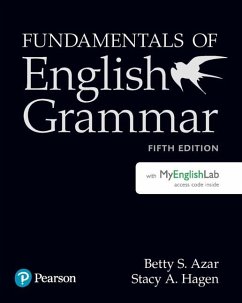
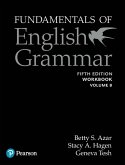
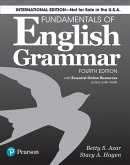
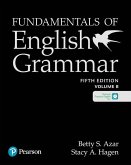
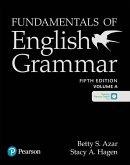
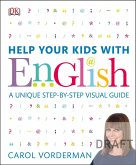
![Dungeons and Dragons Art and Arcana [Special Edition, Boxed Book & Ephemera Set] Dungeons and Dragons Art and Arcana [Special Edition, Boxed Book & Ephemera Set]](https://bilder.buecher.de/produkte/52/52157/52157880m.jpg)
